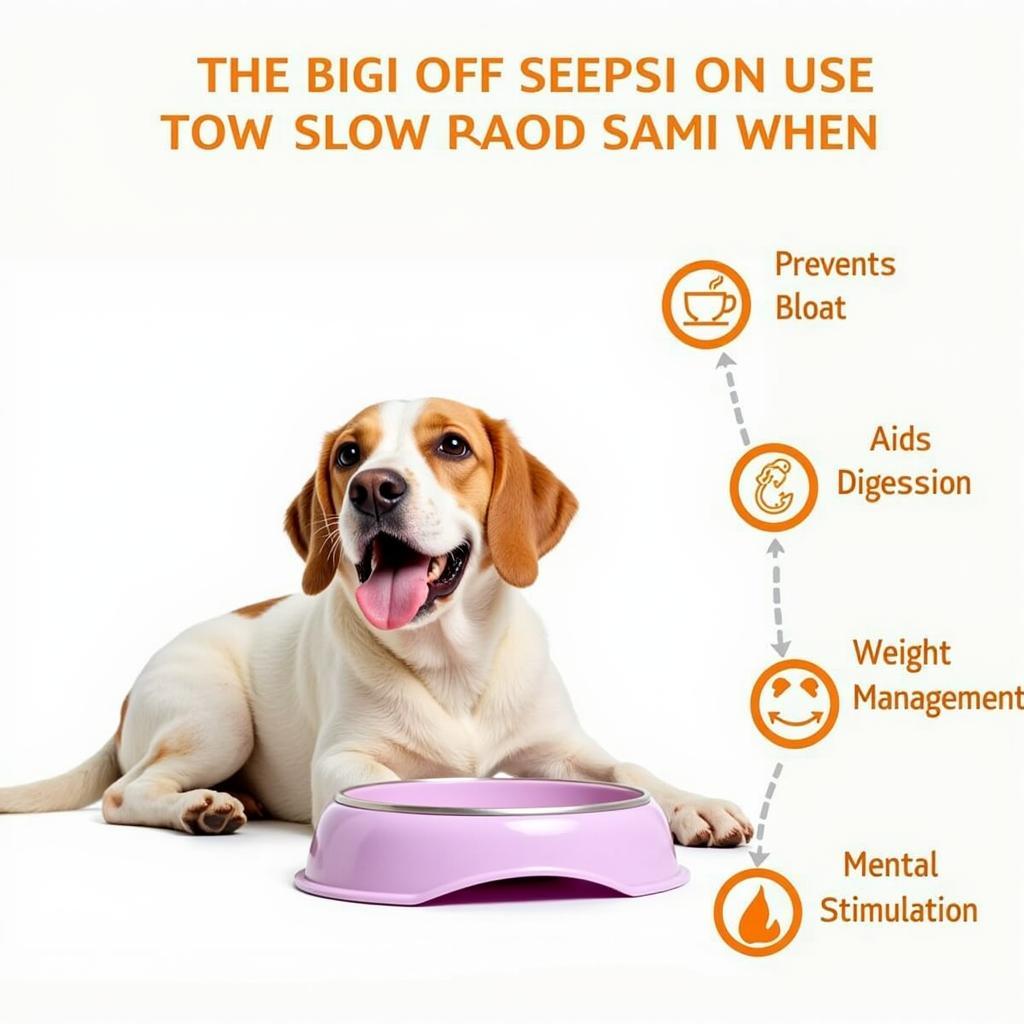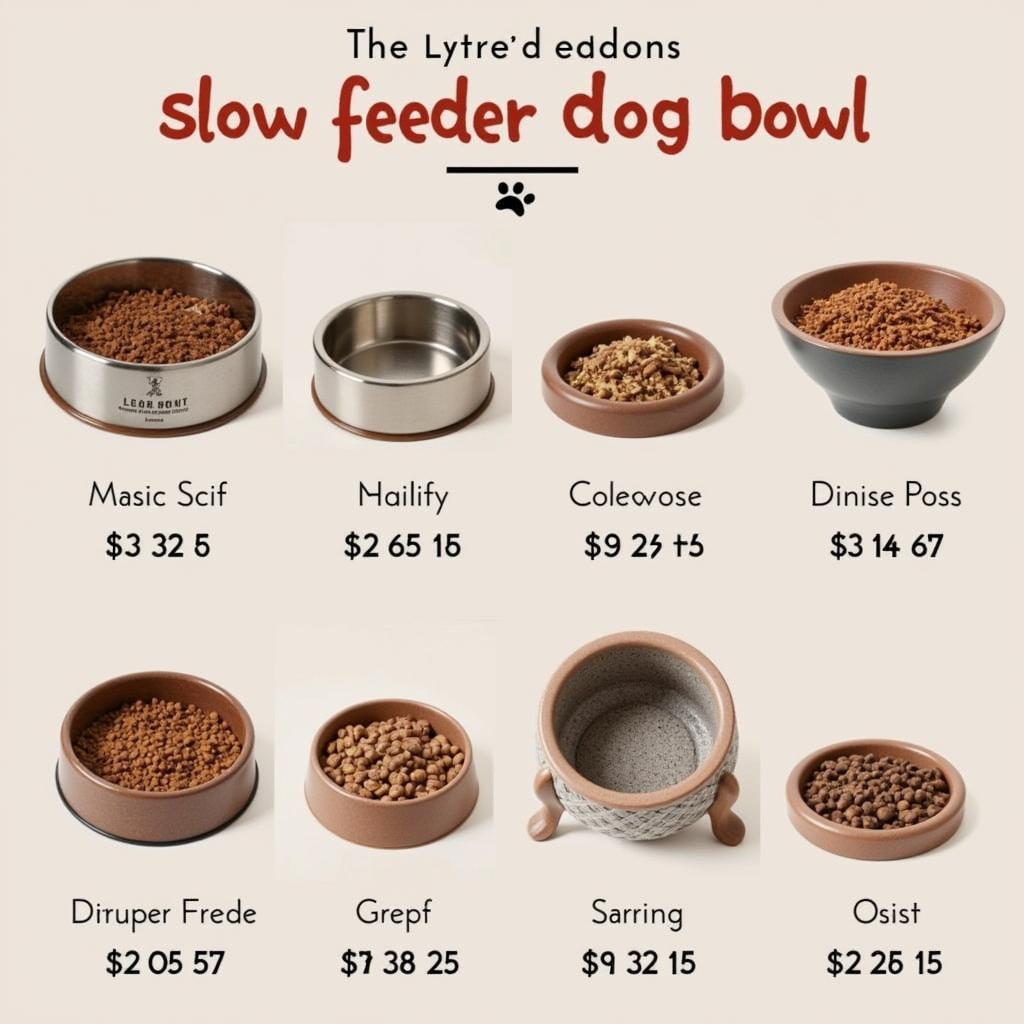Have you ever witnessed your furry friend gobble down their food in seconds flat? While their enthusiasm is endearing, eating too quickly can lead to digestive upset, choking, and even bloat – a life-threatening condition. This is where Dog Food Bowl Slow Feeders come to the rescue! These innovative bowls are designed to slow down mealtime, promoting healthier eating habits and a happier pup.
Why Consider a Slow Feed Dog Bowl?
For many dogs, especially those who are natural “gulpers,” a slow feed dog bowl isn’t just a trendy accessory, it’s a necessity. Here’s why:
- Prevents Bloat: Bloat, or Gastric Dilatation-Volvulus (GDV), is a serious condition that occurs when a dog’s stomach fills with gas and potentially twists. Rapid eating is a significant risk factor, and slow feeders can drastically reduce the risk.
- Aids Digestion: When dogs eat slowly, they swallow less air, leading to better digestion and reduced gas, burping, and discomfort.
- Weight Management: Slow feeders can help dogs feel fuller for longer, making them a useful tool for weight management.
- Mental Stimulation: Turning mealtime into a puzzle can help keep dogs entertained and engaged, preventing boredom.
 Benefits of Slow Feeder Dog Bowls
Benefits of Slow Feeder Dog Bowls
Choosing the Right Slow Feed Dog Bowl
The market offers a wide array of slow feed dog bowls, each with its unique features. Here’s what to consider when making your selection:
1. Bowl Material
- Stainless Steel: Durable, hygienic, and dishwasher-safe, stainless steel is a popular choice. Look for bowls with a wide base to prevent tipping.
- Ceramic: Heavy and less prone to sliding, ceramic bowls are also dishwasher-safe. However, they can chip or break if dropped.
- Plastic: Lightweight and affordable, plastic bowls come in various designs. Choose BPA-free options and inspect them regularly for chew marks.
2. Design and Obstacles
- Ridges and Mazes: These designs create a challenging yet fun eating experience, forcing dogs to work for their food.
- Interactive Puzzles: Some bowls feature hidden compartments or moving parts that require problem-solving skills to access the food.
- Adjustable Difficulty: Consider bowls with adjustable features that allow you to increase the difficulty as your dog gets used to the slower eating pace.
3. Size and Height
- Appropriate Size: Choose a bowl size that corresponds to your dog’s breed and eating habits.
- Elevated Options: For larger breeds or senior dogs, an elevated slow feeder can promote better posture and digestion.
 Types of Slow Feeder Dog Bowls
Types of Slow Feeder Dog Bowls
Transitioning to a Slow Feeder
While slow feeders offer numerous benefits, it’s crucial to introduce them gradually:
- Start Slowly: Begin by offering a small portion of food in the slow feeder while also providing the regular bowl.
- Gradual Increase: Increase the amount of food in the slow feeder over several days as your dog adjusts.
- Monitor Eating Habits: Observe your dog’s eating behavior and make adjustments to the bowl type or difficulty level if needed.
- Positive Reinforcement: Encourage your dog with praise and encouragement throughout the transition process.
FAQs About Slow Feed Dog Bowls
Q: Are slow feeders suitable for all dogs?
A: While beneficial for many, slow feeders may not be suitable for every dog. Some dogs, particularly those with dental issues or a history of resource guarding, might find them frustrating.
Q: Can slow feeders help with my dog’s weight loss?
A: Yes, slow feeders can aid in weight management by promoting a feeling of fullness and preventing overeating. However, it’s essential to combine them with a balanced diet and regular exercise.
Q: How often should I clean my dog’s slow feeder?
A: Like regular dog bowls, slow feeders should be cleaned after each use. Choose dishwasher-safe options for easy cleaning.
Slow Feed Your Way to a Healthier Pup
Investing in a slow feed dog food bowls can be one of the simplest yet most impactful decisions you make for your furry friend’s well-being. By encouraging slower eating habits, you’re promoting better digestion, reducing the risk of bloat, and enhancing their overall quality of life. Remember to choose a bowl that suits your dog’s individual needs and make the transition a positive experience.
If you have concerns about your dog’s eating habits or are unsure which slow feeder is right for them, consult your veterinarian for personalized advice.
For more tips on improving your dog’s health and well-being, check out our articles on dog throwing up undigested food right after eating and puzzle food.
If you need support, please contact us at Phone Number: 02437655121, Email: minacones@gmail.com or visit us at: 3PGH+8R9, ĐT70A, thôn Trung, Bắc Từ Liêm, Hà Nội, Việt Nam. We have a 24/7 customer service team.